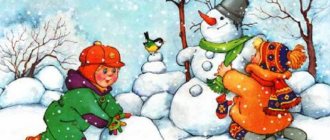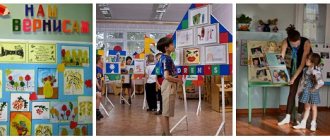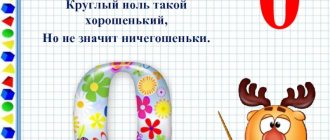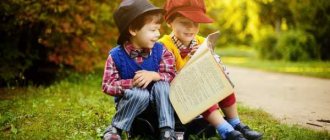Exercises
Do you know that exercises for the development of speech, voice and breathing modernize the baby’s speech apparatus. If he performs a game task in the form of an animal or a fairy-tale character, he will be able to better control his body and learn the plasticity of movements. It should be noted that performances and theatrical games give children the opportunity to immerse themselves in a world of fantasy, teach them to evaluate and notice their own and others’ mistakes. And they do it with great interest and ease.
The kids loosen up and become more sociable. Now they clearly formulate their own thoughts and tell them publicly, they feel and understand the universe more subtly.
As a rule, theater practice classes should provide children with a chance not only to cognize and study the surrounding space through the study of fairy tales, but also to live in accordance with it, to receive pleasure from each successfully completed lesson, from classes, and from a variety of activities.
Types of fairy tales
It is known that the following types of fairy tales are used in fairy tale therapy:
- An artistic or folk tale. This type provides moral and spiritual education, cultivates feelings of duty, mutual assistance, empathy, sympathy, and so on. For example, the fairy tale “Turnip” clearly reflects the support and help among people, without which it is impossible for one person to achieve a high goal.
- An educational and educational fairy tale expands the child’s knowledge about our planet and the principles of behavior in different life situations. These are mainly fairy tales in which numbers and letters are animated.
- Diagnostic narratives help determine the child’s character and reveal his attitude to the world. For example, if a girl likes fairy tales where the main character is a cowardly bunny, then you might think that she is very calm, shy and possibly timid.
- Psychological legends teach a child to fight his fears and failures. Together with the hero, he gains confidence in his abilities.
- Meditative tales create an atmosphere of positivity, comfort, calm, relaxation, excitement and stress relief. This category of fairy tales does not have evil heroes, conflict situations and the eternal struggle against evil.
Fairy tale therapy
What else is interesting about theatrical activities in kindergarten? The fairy tale scenarios here are distinguished by a certain magic and originality. In general, fairy tale therapy is called one of the methods that shapes creative abilities. It is famous for its centuries-old history, but it was given this name only recently.
Fairytale therapy uses fairy-tale parameters to develop creative abilities, integrate personality, modernize relationships with the outside world, and expand consciousness.
Using this method, they develop creative initiative, overcome childhood fears, reduce anxiety and aggressiveness, and accumulate positive communication experience in a group of peers.
The relevance of the use of fairy tale therapy lies in the fact that fairy tales are a natural component of the everyday life of children.
Program tasks
The program for theatrical activities in kindergarten includes the creation of performances. Work on the works is based on original plays that introduce children to fairy tales.
The program performs the following tasks:
- Activates children's cognitive interest.
- Develops visual and auditory attention, observation, memory, resourcefulness, imagination, fantasy, imaginative thinking.
- Eliminates stiffness and tightness.
- Forms the ability to respond unhindered to a command or musical signal.
- Teaches you to coordinate your actions with other kids.
- Fosters contact and friendliness in relationships with peers.
- Teaches how to improvise on the themes of familiar fairy tales and dramatizations.
- Improves coordination of movements and sense of rhythm.
- Develops musicality and plasticity.
- Develops the ability to be evenly placed on the stage and move along it without pushing each other.
- Develops speech breathing and correct articulation.
- Develops diction using poetry and tongue twisters.
- Requires you to clearly pronounce consonants at the end of a word.
- Replenishes vocabulary.
- Teaches you to find words that correspond to given characteristics.
- Teaches you to master intonations that reflect the most important feelings.
- Introduces the creators of the play.
- Introduces theatrical terminology.
- Introduces the structure of the stage and auditorium.
- Develops a culture of behavior in the theater.
As a result of such training, children acquire the following skills and abilities:
- Kids learn to act in a coordinated manner.
- They know how to relieve tension from certain muscle groups.
- Remember the necessary poses.
- Describe and remember the appearance of any baby.
- They know about eight articulation lessons.
- They know how to take a long breath simultaneously with an imperceptible short sigh.
- They tell tongue twisters at different paces.
- They can pronounce tongue twisters with different intonations.
- Able to build a simple dialogue.
- They are able to form sentences with given words.
Objectives of fairy tale therapy
If you look at the report on theatrical activities in kindergarten, you can read a lot of interesting things there. For example, the tasks of fairy tale therapy:
- They develop children's speech with the help of: telling fairy tales in the third person, retelling them, group narration of legends, telling them in a circle, staging fairy tales with the help of dolls, analyzing fairy tales, composing fairy tales.
- Identifies and supports creativity.
- Reduce the level of anxiety and aggressiveness.
- Develop the ability to overcome fears and obstacles.
- Develop skills for fruitful expression of emotions.
Theatrical activities of children in kindergarten begin with a magical physical education session. Next comes the magical breakfast porridge. Teachers with children strive to spend the whole day in a kind, fairy-tale climate.
Various fairy tale characters come to classes for the children, who tell them entertaining stories about our planet, play with them, read fairy tales and teach them kindness.
By listening to a fairy tale, the baby learns the philosophical meaning, behavior patterns and relationship styles. Moreover, all processes of comprehension occur at the symbolic-unconscious level.
The baby learns to tell stories, think creatively, retell, and then makes an impressive leap in development, which will influence the formation of his personality.
Communication skills
Have you ever studied a report on theatrical activities in kindergarten? No? It contains a lot of useful information. For example, from such documents you can find out that today the most important thing is the formation of communicative prestige, which is the main indicator of the development of a child’s personal qualities.
In general, communicative prestige consists of a set of skills that determine a preschooler’s desire to contact people. This also includes the ability to create a dialogue, the ability to communicate to plan joint activities, the ability to communicate using non-verbal means (gestures, facial expressions), and the manifestation of goodwill towards partners.
At the moment, the issue of developing communication skills in children is very acute. After all, the speed of his development, his attitude towards people, and his sense of self depend on the ease of a child’s communication with people.
Self-education in theatrical activities in kindergarten provides for the development of communication skills in children. To achieve this goal, it is necessary to create an environment in which every child could convey his emotions, desires, feelings and views, both publicly and in simple conversation. Here kids should not be embarrassed to listen.
The theater provides enormous assistance in this, as it unites children with a common idea and experiences. The children come together through interesting activities that allow each participant to show their activity, creativity and individuality.
In the process of theatrical activity and preparation for it, children begin to cooperate with each other, strive to communicate with peers, and develop communication skills.






